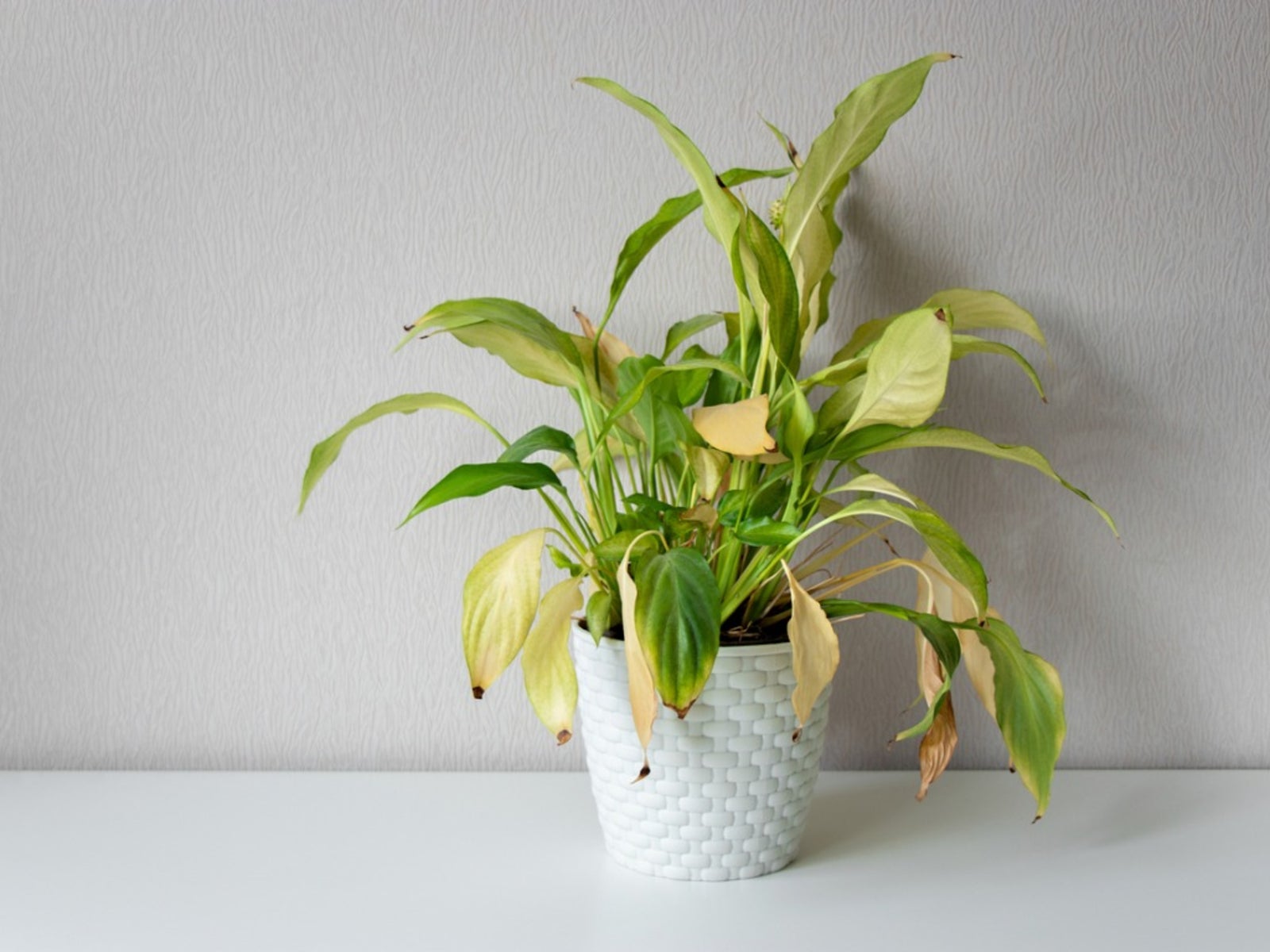
While running some errands recently, I noticed a Chlorophytum – “spider plant” in a hanging basket.
From a distance it looked great. Lots of foliage and “pups” hanging down. Looking at it closer I noticed a lot of spider plant brown tips on the leaves.
Why Do Plant Leaves Turn Brown?
Growers don’t seem to have the same problem with brown leaf tips while growing the plants.
What is different from the growing end and moving indoors?
Yes, the plant does move inside and there is some stress from reduced lighting (using addition indoor lighting helps) and the plant acclimating. But, one answer may not seem quite so obvious.
What is it? – Water
Water is water – right?
Not so fast. Let’s take a quick look at the differences in the water a grower uses and the water most people use on their plants at home.
Growers Water
Most growers (producing indoor houseplants) have wells with electric or diesel pumps. The pumps draw water directly from the ground or soil.
Unlike the water that is found in most cities, this water hasn’t been treated by the local water treatment plant.
Some growers are beginning to collect and “clean” water before using it on their plants.
I didn’t say add chemicals but clean the water. They are doing this through REVERSE OSMOSIS.
Water is pumped through a screen that is fine enough to allow water molecules to pass, but stops dissolved solids, such as salts (fertilizer) and other chemicals.
This “clean” water helps growers produce plants that have less problems with disease and they have cleaner foliage.
Homeowner or City Water
Tap water or city water is different. The water that comes out of your kitchen faucet has most likely been treated.
Years ago cities began to add chlorine and fluoride to the water supply. Fluoride may be fine for your teeth but many indoor plants are not fond of it.
Lynn Griffith from A & L Labs states:
“Fluoridated city water usually has 1 ppm (parts per million) of fluoride, four times the amount considered safe for sensitive plants.”
His book is a MUST HAVE and MUST READ for any commercial grower of plants.
Don’t get the idea that if you water your plants with water from the kitchen they are going to die. What does this have to do with brown edges on leaves on your plants anyway?
Over time some of these minor chemicals such as boron and fluoride build up in the leaves.
This buildup shows itself in the form of brown plants leaves on plants or tip burn on Dracaenas, and spider plants. Spathiphyllums – the Peace Lily plant show distorted or yellow leaves with high boron.
There are other reasons for brown tips on indoor plants:
- Plant pests such as spider mites and other pests
- Too much fertilizer
- Too much water leading to plant root rot
- Not enough water
- Chemical burn
- Plant diseases such as powdery mildew, bacterial leaf spot, and fungal diseases.
- Too much of direct sunlight
- Bad air circulation
- Not having enough nutrients (calcium deficiency, magnesium deficiency, iron deficiency, phosphorus deficiency
Using good water on your plants is a great way to start.
How Can You Get Good Water?
The easiest way to help yourself get “good” or “better” water for your plants, is by filling up a container with water from the sink, and let it sit overnight. This will allow at least the chlorine to dissipate.
Many people use distilled water because it lacks the chemicals found in tap water.
Professional plantscapers must deal with using and moving water around all the time. Some of them have no problems and others it’s a battle.
If you face browning tips on your plants, try setting out some water the night before you water.
Helping to stop the possible headache of brown spots caused by chlorine and fluoride is just one more way for you to enjoy your plants more.
